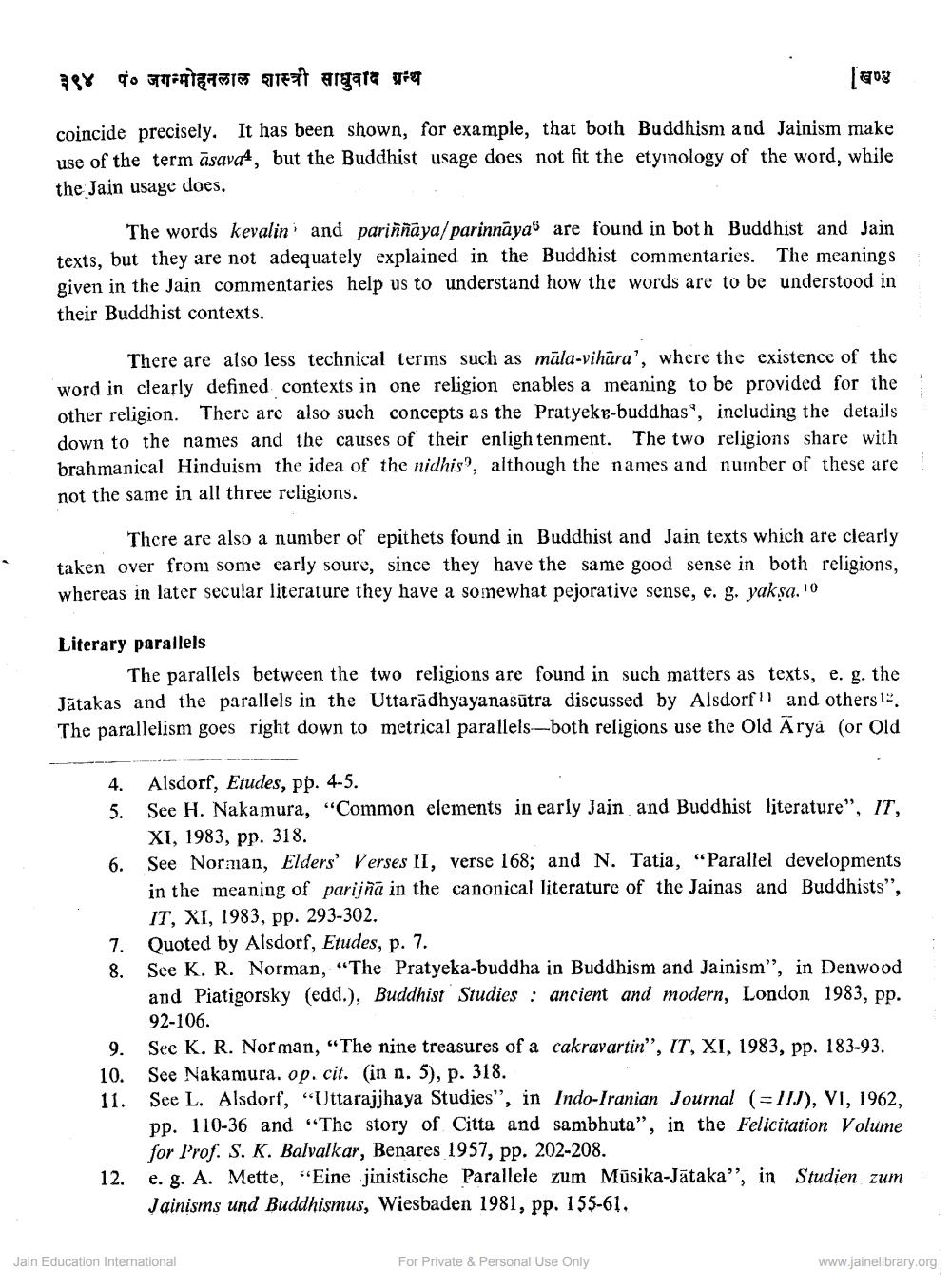________________
३९४ पं० जगन्मोहनलाल शास्त्री साधुवाद ग्रन्थ
[ खण्ड
coincide precisely. It has been shown, for example, that both Buddhism and Jainism make use of the term asava, but the Buddhist usage does not fit the etymology of the word, while the Jain usage does.
The words kevalin and pariññāya/parinnaya are found in both Buddhist and Jain. texts, but they are not adequately explained in the Buddhist commentaries. The meanings given in the Jain commentaries help us to understand how the words are to be understood in their Buddhist contexts.
There are also less technical terms such as mala-vihara', where the existence of the word in clearly defined contexts in one religion enables a meaning to be provided for the other religion. There are also such concepts as the Pratyeke-buddhas, including the details. down to the names and the causes of their enlightenment. The two religions share with brahmanical Hinduism the idea of the nidhis", although the names and number of these are not the same in all three religions.
There are also a number of epithets found in Buddhist and Jain texts which are clearly taken over from some carly soure, since they have the same good sense in both religions, whereas in later secular literature they have a somewhat pejorative sense, e. g. yakṣa. 10
Literary parallels
The parallels between the two religions are found in such matters as texts, e. g. the Jatakas and the parallels in the Uttaradhyayanasūtra discussed by Alsdorf and others The parallelism goes right down to metrical parallels-both religions use the Old Arya (or Old
4.
5.
6.
7.
8.
9.
10.
11.
12.
Alsdorf, Etudes, pp. 4-5.
See H. Nakamura, "Common elements in early Jain and Buddhist literature", IT, XI, 1983, pp. 318.
See Norman, Elders' Verses II, verse 168; and N. Tatia, "Parallel developments. in the meaning of parijña in the canonical literature of the Jainas and Buddhists", IT, XI, 1983, pp. 293-302.
Quoted by Alsdorf, Etudes, p. 7.
See K. R. Norman, "The Pratycka-buddha in Buddhism and Jainism", in Denwood and Piatigorsky (edd.), Buddhist Studies: ancient and modern, London 1983, pp. 92-106.
See K. R. Norman, "The nine treasures of a cakravartin", IT, XI, 1983, pp. 183-93. See Nakamura. op. cit. (in n. 5), p. 318.
See L. Alsdorf, "Uttarajjhaya Studies", in Indo-Iranian Journal (IIJ), VI, 1962, pp. 110-36 and "The story of Citta and sambhuta", in the Felicitation Volume for Prof. S. K. Balvalkar, Benares 1957, pp. 202-208.
c. g. A. Mette, "Eine jinistische Parallele zum Musika-Jātaka", in Studien zum Jainisms und Buddhismus, Wiesbaden 1981, pp. 155-61.
Jain Education International
For Private & Personal Use Only
www.jainelibrary.org




